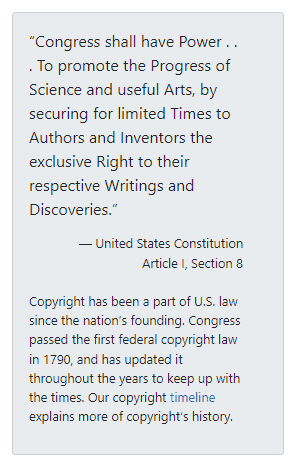In the digital age, there are approximately 200 million content creators worldwide. If you are reading this, you are surely one of them.
But do all creators truly understand what they are doing? Are they aware of the risks of copyright infringement?
Unfortunately, many people still don’t fully grasp how copyright infringement works and the possible negative impact it can have on their professional pursuits.
Can you avoid copyright by giving credit? While some believe that giving credit to the original creator safeguards them from legal implications, the truth is that it is more complex than you think.
Whether you’re a content creator, consumer, or simply curious about the legal aspects of digital content, this exploration aims to clarify the role of attribution in the broader landscape of copyright protection.
As online content creators and writers, collecting materials from the internet is the wisest thing to do. It is important that you know what you are doing and if it is safe.
Are you ready to learn how to slay content creation and writing without fearing such a huge case?
If so, please continue reading.
- Giving credit alone doesn’t exempt you from copyright infringement; you need the proper permissions or licenses.
- Understanding and adhering to the scope of use and fair use considerations is crucial for lawful content usage.
- Consistently providing clear and accurate attribution is essential in respecting creators’ rights and avoiding legal issues.
Table of Contents
Can You Avoid Copyright Infringement by Giving Credit?
No, you can’t avoid copyright infringement by giving credit because is not sufficient to prevent copyright infringement. Although proper attribution is important, it does not serve as a substitute for acquiring the essential permissions or licenses required to use copyrighted material.
It is important to always make sure that you possess the legal rights to use the content, regardless of whether you acknowledge the original creator. Taking this precautionary step ensures compliance with copyright regulations and safeguards against potential legal implications related to unauthorized use.
Therefore, while attribution is important, it should be complemented by the necessary legal permissions to ensure a lawful and ethical use of copyrighted material in your creative or professional endeavors.
Here are some things to consider:
Permissions and Licenses
The copyright owner may have specific terms and conditions for use, and you need to obtain explicit permission or stick to the terms of a proper license.
Scope of Use
The “scope of use” refers to the range of ways you are allowed to use a particular piece of work, like a text, image, or video. The terms of use, which are the rules set by the creator or copyright holder, often include limitations on how the material can be used.
Fair Use Consideration
Fair use is a rule that lets you use copyrighted stuff in certain situations without asking for permission or paying the owner. Giving credit to the original creator is just one factor in fair use cases, but it doesn’t automatically mean your use is fair.
To help you understand more about Fair Use, read Copyright & Fair Use by Stanford University.
Legal Obligation
Copyright law involves legal obligations. Merely acknowledging the original creator doesn’t fulfill these obligations if you haven’t obtained the necessary rights to use their work.
The essence of copyright law is not intended to cater to people’s greed but rather to protect creative works and promote a fair and balanced system that respects the rights of creators. It is only right to copyright for arts and literature to flourish more.

In 2021, TikTok faced scrutiny and legal challenges related to music licensing. Several artists and music labels raised concerns about the use of their music on the platform without proper licensing or compensation. There are also huge Copyright Cases in 2022.
How to Correctly Give Credit to the Owner?
Providing proper credit, also known as attribution, is important when using someone else’s work, especially under licenses like Creative Commons.
Many content creators ask, what is copyright attribution, and why does it matter? Simply put, it’s the practice of acknowledging the original creator of a work, and it’s a fundamental part of using copyrighted content legally and ethically.
Below are some of the general guidelines for giving credit:
- Understand the Licensing or Usage Terms: Before using someone else’s work, determine whether it is protected by copyright and if there are specific terms of use or a license. This information guides how you should give credit.
- Check the License: If the content you’re using is under a specific license (e.g., Creative Commons), check the license terms for any specific requirements regarding attribution.
- Identify the Creator: Find out the name or username of the creator of the work. This might be an individual, an organization, or a pseudonym used online.
- Include Essential Information: Typically, proper attribution includes the following elements:
- The creator’s name (or username)
- The title of the work
- The source of the work (e.g., a link to the original)
- Format the Attribution Clearly: Place the attribution prominently, near the content, or in a way that is easily associated with the material. The goal is to make it clear who the original creator is.
- Link to the Original Work: Whenever possible, include a direct link to the original work. This not only aids in giving proper credit but also allows users to explore the source material.
- Specify Modifications or Adaptations: If you’ve made modifications to the original work, make it clear in your attribution. Some licenses may require you to share derivative works under the same terms.
- Be Consistent in Formatting: Maintain consistency in how you format attributions, especially if you are using content from various sources. This helps create a standardized approach.
- Respect Community Guidelines: Some platforms or communities may have specific norms or guidelines for providing attribution. Familiarize yourself with these to ensure adherence to community standards.
Remember, the specific requirements may vary depending on the license and the platform where you’re using the content, so always refer to the terms provided by the copyright owner or the licensing agreement.
Though almost everything on the internet is copyrighted, some materials are free to use. There are different types of licenses. If you want to understand more about them, read Copyright and Intellectual Property Toolkit of University of Pittsburgh.
Understanding authorship and creator rights is important. Some works, like government publications or works with expired copyrights, may be free to use. Works in the public domain, including those with expired copyrights or dedicated to the public domain, are not under copyright protection.
Also, it’s worth clarifying for beginners: Are references copyright infringement? Generally, no. If you’re citing sources for commentary, education, or review, and you stay within fair use guidelines, referencing is typically safe. However, copying substantial parts without permission still counts as infringement.
PRO TIP: If the content you are creating involves video editing and demographics, some many websites and applications offer stock photos and videos that are copyright-free. For example: Canva, Pexels, Motion Array, Pixabay, and many more.
Check for Creative Commons licensing, as some creators release their works under specific permissions. Always adhere to the terms of the license. Consider fair use, which allows for the use of copyrighted materials under certain conditions.
Utilize online databases and copyright registries to check copyright status.
Wrapping Up
Providing credit to the owner of content is important for ethical and legal reasons. It signifies respect for intellectual property, acknowledging the effort and creativity made by others. In professional settings, proper attribution demonstrates a commitment to ethical standards and enhances professionalism.
Additionally, in creative communities, giving credit helps to create a positive and collaborative environment, encouraging a culture of reciprocity and trust.
From a legal perspective, adhering to licensing terms, such as those under Creative Commons, often mandates attribution. This practice also helps prevent unintentional plagiarism, promotes fair use principles, and contributes to the educational value of shared content.
As individuals who invest significant effort in crafting many forms of art such as songs, movie scripts, paintings, photographs, or books, it is not only right that we possess legal ownership of our creations.
Witnessing our works being used inappropriately is an emotional violation.
Overall, giving credit is a foundational aspect of responsible content creation, building relationships, and contributing to a culture of respect within the creative ecosystem.
Frequently Asked Questions
Does giving credit to the original creator mean you can use their work freely?
No, giving credit is not enough for free use. You must obtain the necessary permissions or licenses to legally use someone else’s work.
What is ‘fair use’ and how does it apply to you?
Fair use allows limited use of copyrighted material without permission in specific cases, like education or commentary. However, it doesn’t automatically apply just because you credit the creator.
How do you know if I’m legally allowed to use someone’s copyrighted work?
Check the work’s licensing terms and ensure you have the required permissions or licenses. If in doubt, consult legal advice or contact the copyright holder.
Can you modify someone else’s work if you give them credit?
Modifying someone else’s work requires permission, even if you give credit. Always check the terms of the license or get explicit permission from the copyright holder.
What information should you include when giving credit to a creator?
Include the creator’s name, the title of the work, and a link to the original source. If you’ve made modifications, clearly state them in your attribution.

